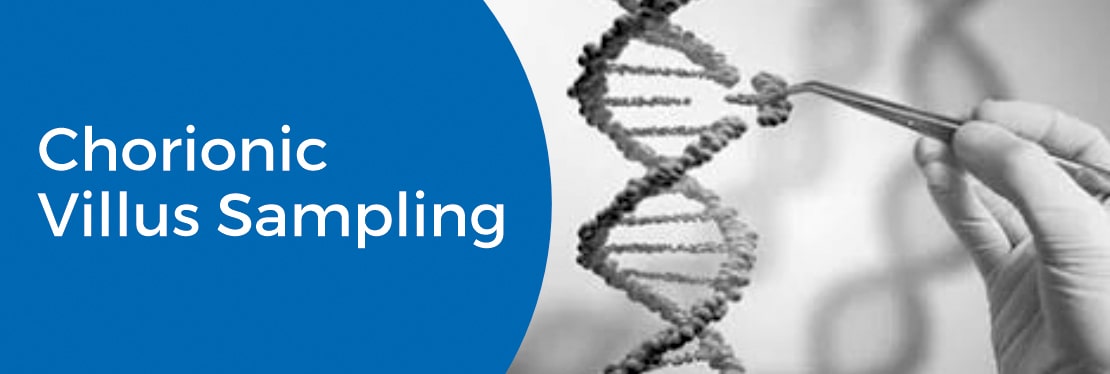Overview
Chorionic villus sampling (CVS) is a prenatal test in which a sample of chorionic villi is removed from the placenta for testing. The sample can be taken through the cervix (transcervical) or the abdominal wall (transabdominal).
During pregnancy, the placenta provides oxygen and nutrients to the growing baby and removes waste products from the baby’s blood. The chorionic villi are wispy projections of placental tissue that share the baby’s genetic makeup. The test can be done as early as 10 weeks of pregnancy.
Chorionic villus sampling can reveal whether a baby has a chromosomal condition, such as Down syndrome, as well as other genetic conditions, such as cystic fibrosis. Although chorionic villus sampling can provide valuable information about your baby’s health, it’s important to understand the risks — and be prepared for the results.
CVS is usually done around 10-11 weeks of pregnancy. It can be done later if there is a specific reason.
Why it’s Done
Chorionic villus sampling may be used for genetic and chromosome testing in the first trimester of pregnancy. Here are some reasons that a woman might elect to undergo CVS:
- Previously affected child or a family history of a genetic disease, chromosomal abnormalities, or metabolic disorder
- Maternal age over 35 years by the pregnancy due date
- Risk of a sex-linked genetic disease
- Previous ultrasound with questionable or abnormal findings
- Abnormal cell-free DNA test
How You Prepare
CVS is an outpatient procedure performed by a specially trained doctor. If you decide to have a CVS, an ultrasound scan will be arranged before the test to establish the stage of pregnancy and the best time for doing the CVS.
What you can expect
The procedure will be explained to the patient as it has multiple steps:
- Transabdominal chorionic villus samplingAfter cleansing your abdomen with an antiseptic, your health care provider will insert a long, thin needle through your abdominal wall and into your uterus. You might notice a stinging sensation when the needle enters your skin, and you might feel cramping when the needle enters your uterus. The tissue sample from the placenta will be withdrawn into a syringe, and the needle will be removed.
- Transcervical chorionic villus samplingAfter cleansing your vagina and cervix with an antiseptic, your health care provider will open your vagina with a speculum and insert a thin, hollow tube through your cervix. When the catheter reaches the placenta, gentle suction will be used to remove a small tissue sample.
Results/ Post Procedure
Genetic counselor will help you understand your chorionic villus sampling results. Occasionally, test results are unclear and amniocentesis — another prenatal diagnostic test — is needed to clarify the diagnosis.
It’s also important to remember that chorionic villus sampling can’t identify all birth defects, including spina bifida and other neural tube defects.
What Are the Risks?
As with any invasive procedure, complications may occur. Some possible complications may include, but are not limited to, the following
- Cramping, bleeding or leaking of amniotic fluid (water breaking)
- Infection
- Miscarriage
- Preterm labour
- Limb defects in infants, especially in CVS procedures done before 9 weeks (rare).
Women with twins or other multiples will need sampling from each placenta in order to study each baby.
